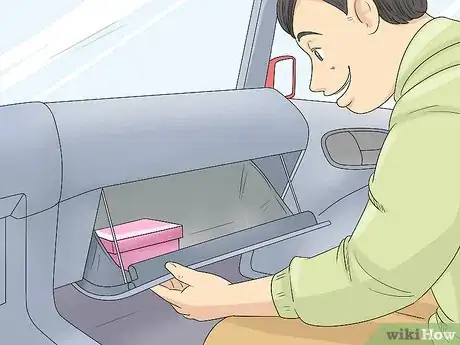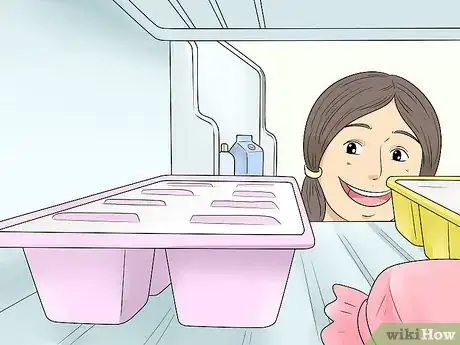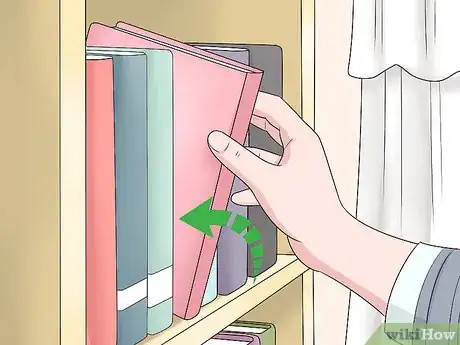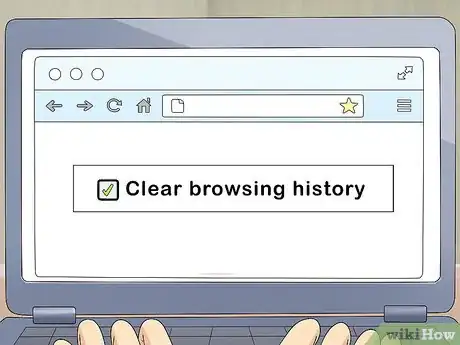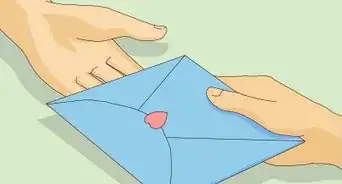This article was co-authored by wikiHow Staff. Our trained team of editors and researchers validate articles for accuracy and comprehensiveness. wikiHow's Content Management Team carefully monitors the work from our editorial staff to ensure that each article is backed by trusted research and meets our high quality standards.
There are 7 references cited in this article, which can be found at the bottom of the page.
This article has been viewed 369,399 times.
Learn more...
Have your parents hidden something you want back? Perhaps you want a sneak peek at a birthday or Christmas present. Your parents may not realize it, but you're too smart to be fooled by the typical hiding spots. By strategically looking in every room, nook and cranny, you're sure to be able to find what you're looking for.
Steps
Choosing the Right Room
-
1Consider the size of the item. If your parents have hidden something big, then it will be hidden in a very different place than something small, like your favorite DVD. Think about where something fits and is concealed best.
- Very small items like DVDs can be hidden in very tight places. Look between books, inside bags, under lightweight items.
- If you're looking for something like a bicycle, avoid rooms where it obviously won't fit without being noticeable, like the bathroom.
-
2Search their bedroom. The parents' bedroom is normally off-limits, so it's the most obvious place to hide something. Think about whichever place is the most private, the location you'd get in the most trouble for investigating.
- Check their drawers. Sock and underwear drawers are off-limits, and a bit odd to sift through. This is a very natural hiding spot.
- Look in their closet. The space in the closet allows for a lot of hiding spots. Make sure you check the shelves, between folded clothes, and in any messy-looking location.
- Crawl under the bed. For some reason, people think under the bed is a good hiding spot. For adults, it's a more difficult location to see because it requires getting on the floor.
- Take a peek behind the TV. The spot behind the TV is often dusty because the TV is heavy and hard to move. This is a natural hiding spot because people don't see the spot often.
- Spot-check their bathroom. There aren't a lot of great hiding spots in your parent's bathroom, so look in a few obvious locations.
Advertisement -
3Look in cluttered rooms. The more items in a room, the easier it is to camouflage something. Colors, shapes, and patterns blend into the background when there are multiple items in the way. Additionally, the more items that need to be moved, the less likely someone is to go through the effort of searching.
- The pantry is a perfect hiding spot. Lots of heavy cans, cookbooks, and assorted odds-and-ends obstruct the view. Moving a bunch of food all around makes it harder to find.
- Check the linen closet. If you don't change your sheets or towels, the linen closet could be your jackpot. This is a great hiding spot for thin items like DVDs, books, and games.
- If your parents have a home office, there is a good chance a bunch of stuff is in there. Papers litter the desk, multiple drawers too. Sift between every item and leave no page unturned.
-
4Search your room. Yes, search your room. Hiding something where you'd least expect it – like your drawer full of dress socks – is a pretty creative idea. More than likely, they'll hide it where you don't look. If they are always harping on you about cleaning your room, it's very possible they just hid your item within your mess.
- Check your closet. If you rarely look at the top of the closet, that could be a good location.
- Most people rarely look behind dressers or cabinets. If you're searching for something thin, try taking a peek behind either location.
-
5Scour the garage. The garage is full of nearly unlimited hiding potential. Check behind or inside trash cans, recycle bins, boxes, and paint cans. Other cases, like those for power drills, usually have a few small spots to hide things as well.
- The garage opener shroud is an easily removable casing.[1]
- Look in large containers that appear to be old junk. A foot-locker or plastic tub is a seldom touched place that's perfect for hiding.
Searching Creative Locations
-
1Climb up to the attic. Attics are common hiding places, but difficult to search thoroughly and stealthily. Try looking when you're home alone, but be very careful not to step where there is not aboard. You don't want to bust through the ceiling and leave incriminating evidence you can't possibly cover.
-
2Jump in the car. If you're not allowed to use their car, that makes it a perfect hiding spot. Pretend to forget something out there after a car trip and search quickly. There are only so many places to hide items in the car, so look to the most obvious spots.
- The glove box is an obvious pick for hiding something. If you're searching for something small like keys or a remote, try the glove box.
- An armrest area is another obvious hiding spot. Sift through the oil change printouts and the car registration to find thin items like cards, phones, and games.
- Pop the trunk. There is usually a button to get it open. Larger items can be hidden very easily in the trunk.
-
3Think about your parents' hobbies. More than likely your parents have a few things they like to do in their spare time. Those items provide good hiding spots because they check back often, and know when things are out of order.
- Golf bags are a perfect, deep spot for longer gifts. If you suspect you're getting a baseball bat, that's an ideal location.
- If your father does a lot of yard work, or your mother does a lot of gardening, their tools are probably pretty dirty. They may think you'll be less likely to look among these items, and that's why they will use that spot to hide things.
- Crossword puzzles and Sudoku books are a great spot for thin items like gift cards, pictures, and concert tickets.
-
4Look in ventilation ducts.[2] In many air ducts, there is a deep reservoir to push items back. If they use this location, it's more than likely going to be a short-term hiding spot. They wouldn't want to block the airflow into the house for very long.
- Large presents or items need somewhere big enough to conceal the size of the item. Check the largest air return first.
- Small vents often have quick turns in them. A shorter item would likely fall into the ventilation system. Search for longer items here, ones that wouldn't fall through.
Looking Past Diversions
-
1Check the freezer. The freezer is just a very odd place to hide things because of the temperature. Some items can be ruined in the freezer, and there isn't a lot of room for storage. Think about smaller items that won't be affected by the temperatures.
- Mini-sized items fit perfectly in frozen vegetable bags. They know you don't like broccoli, so they put what they want to hide where you'd least want to go.
- Hiding something in a frozen dessert would be a clever choice. A box of ice cream sandwiches is prime for hiding things. Your parents know you want desserts and aren't allowed to have them without permission. More than likely have an idea of how much is left.
- Check behind the ice. If there are ice cube trays, move them and check underneath or behind. Also, some older freezers get a bit of ice buildup in them, a great spot to hide something small like a charger.
-
2Check the vegetables. Believe it or not, there are safes and hiding spots made to look just like food. Books, cases, and folders are way more obvious than food hiding locations.
- Who would even think about hiding something inside a head of lettuce? Well, it's been done.[3]
- Frozen bags of vegetables are very tricky locations to hide from kids. Parents know you're very unlikely to look there.
- Look behind vegetables in the pantry. Vegetables are often bunched together, which would make a prime hiding spot for kids who don't like vegetables.
-
3Check fake bottles. The fact there are so many options makes the hiding spot time-consuming to discover. They may have even wrapped the hidden contents in bubble wrap so there is no noise.
- Sniff the spices. Emptied coffee cans or spice jars are great diversion safes. They're fairly common, but difficult to find since there are so many spices.
- Shake pill bottles. Emptied-out medicine bottles are brilliant spots for tiny items or rolls of money. Check their medicine cabinet or maybe even a potted plant.[4]
- Squirt some lotion. An emptied-out lotion bottle is an ideal location for spare keys, small remotes, cell phones, and credit cards.[5]
-
4Look at appliances. Your parents already know you're not going to use several appliances in the house. Try searching in, on, or behind appliances that are big enough to conceal something.
- Pull out the vacuum. The vacuum cleaner is perfect for hiding big things out in the open. Vacuums have a large, easily accessible cavity to stuff in various items.[6]
- Mixers often have bowls big enough to use as hiding spots. Tip each bowl carefully and see if there is something inside.
- Open doors on all appliances. The oven, the microwave, the toaster oven, they all make great hiding spots, especially if your parents are the only ones who cook.
Making Sure You Don't Get Caught
-
1Leave wrapped items alone. No matter how careful you are, you won't be able to make the present look pristine and untouched. Follow a few of these steps if you're uncertain about whether you should mess with something or not:
- Removing tape will likely tear the wrapping paper, leaving evidence. Don't mess with the tape.
- Wrapping paper is difficult to put back precisely. Trying to rewrap an item is sure to fail because parents have years of experience wrapping presents to make them look better.
- Bows are a definite stop sign. Once a bow is unwrapped or curled the wrong way, it can be so delicate that you can't put them back together.
-
2Cover your tracks. Make sure to put everything back where you found it. If you looked under a pile of books or something, don't just pile the books on the floor and leave them there. Your parents will know you've been snooping.
- Make sure you know the order of items, not just the positioning. Your parents may have things alphabetically-organized or put in some other order.
- Pay attention to folds and creases, especially in clothing. They'll know you've been in their stuff if the folds are different than the norm.
- Clean off smudges from glass items. Use your shirt or a paper towel to remove any incriminating evidence if you happened to have touched the glass and left a visible fingerprint.
-
3Delete your browser history. Make sure they don't see this page! If they see this page, it doesn't matter how well you covered your tracks. They'll know your intent and won't trust you. [7]
- If your parents find out you've been snooping around, they may even dedicate time to finding a better hiding spot.
- Log off the computer. Leave no evidence you were on it and make sure it's cool enough and not hot, so your parents won't notice.
- Turn the computer off. If the computer was off, to begin with, you want to make sure and power it down.
Community Q&A
-
QuestionWhat if they hide it, and you know where it is, but when you look it's not there?
 Community AnswerParents are tricky. They may have let you see the hiding spot just to throw you off.
Community AnswerParents are tricky. They may have let you see the hiding spot just to throw you off. -
QuestionMy mom hid my PS3, and I have no clue where she put it. I know it's in the house.
 Community AnswerTry multiple locations that you're unlikely to normally see. A PS3 would fit well under their bed, at the top of any closet, or could be in the trunk of the car.
Community AnswerTry multiple locations that you're unlikely to normally see. A PS3 would fit well under their bed, at the top of any closet, or could be in the trunk of the car. -
QuestionWhere would they put my phone in their room?
 Community AnswerCheck the closet, under their bed, or in their dresser drawers. A phone is small enough to be hidden in a variety of locations.
Community AnswerCheck the closet, under their bed, or in their dresser drawers. A phone is small enough to be hidden in a variety of locations.
Warnings
- Losing your parent's trust is very hard to regain. Remember to put everything back in its place, like it was never touched.⧼thumbs_response⧽
- Getting caught searching where you're not supposed to will likely get you in serious trouble.⧼thumbs_response⧽
References
- ↑ http://www.familyhandyman.com/home-security/20-secret-hiding-places#13
- ↑ https://www.apartmenttherapy.com/8-secret-spots-to-hide-valuables-at-home-190982
- ↑ http://www.bimbambanana.com/index.php?p=iceberg&side=visProd&prod_id=328
- ↑ http://www.familyhandyman.com/home-security/20-secret-hiding-places#6
- ↑ http://www.safewise.com/blog/hiding-plain-sight-6-sneaky-ways-keep-valuables-safe/
- ↑ http://www.familyhandyman.com/home-security/20-secret-hiding-places#2
- ↑ https://support.google.com/chrome/answer/95589?co=GENIE.Platform%3DAndroid&hl=en
About This Article
To find something that your parents have hidden, think about the size of the item and where it would fit. For example, your parents would have to hide a bike in a very different spot than they would a DVD. Scour spots where your parents know you don’t go, like their closet, under their bed, in the garage or linen closet, or in a home office. You can also check behind the couch or TV set or in the attic or pantry. If you find what you’re looking for and it’s wrapped neatly, don’t try to open it or else your parents will know what you’ve been up to. Also, make sure to put everything back exactly where you found it so your parents won’t know you’ve been snooping. To learn how to not get distracted during your search, keep reading!






